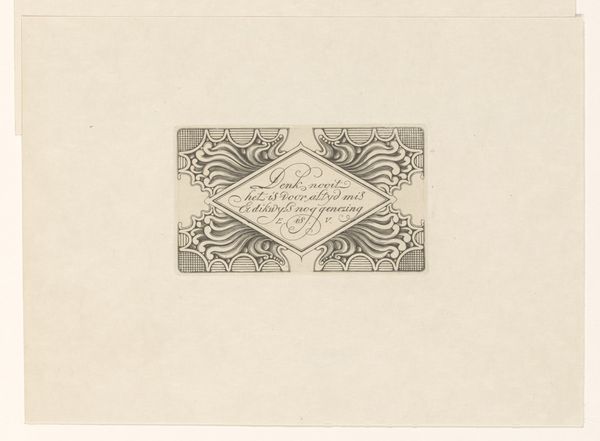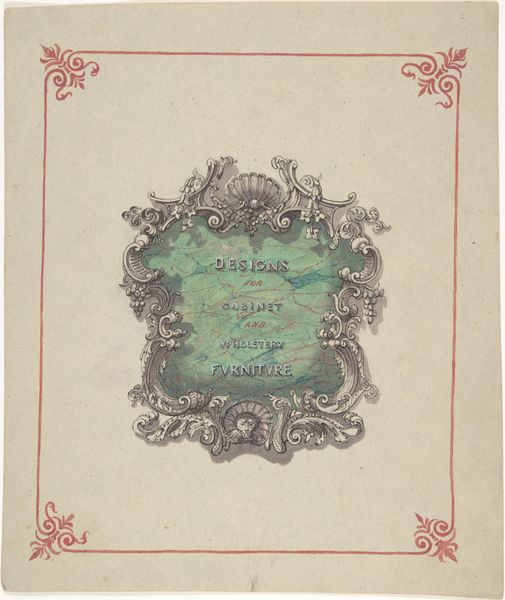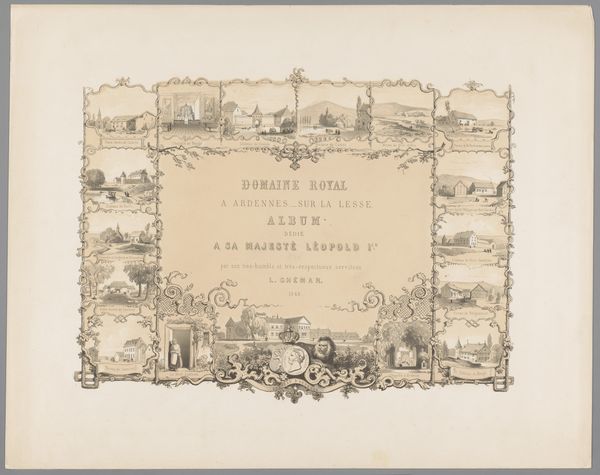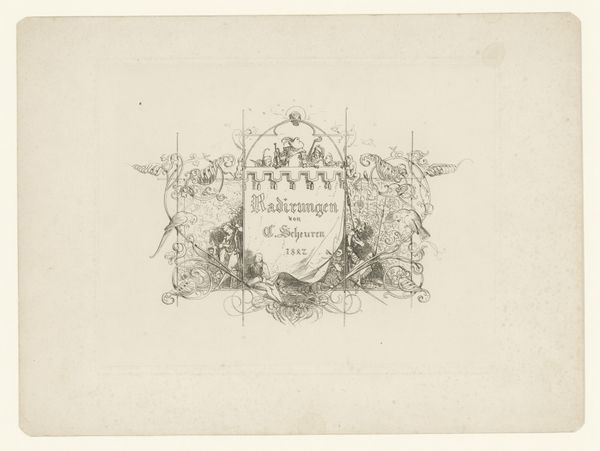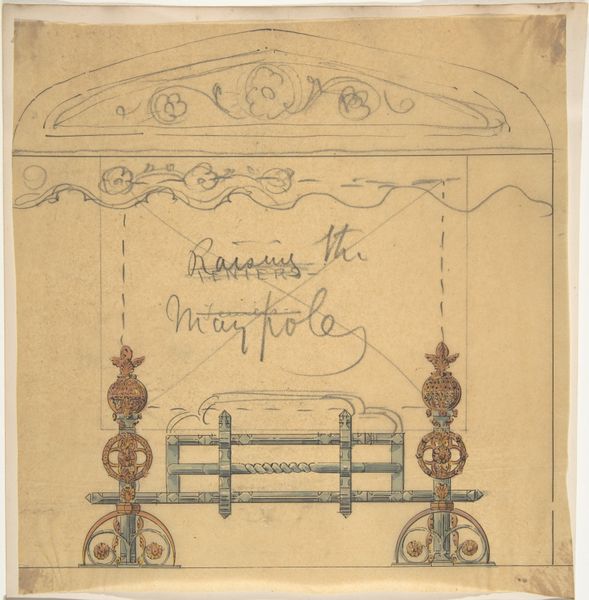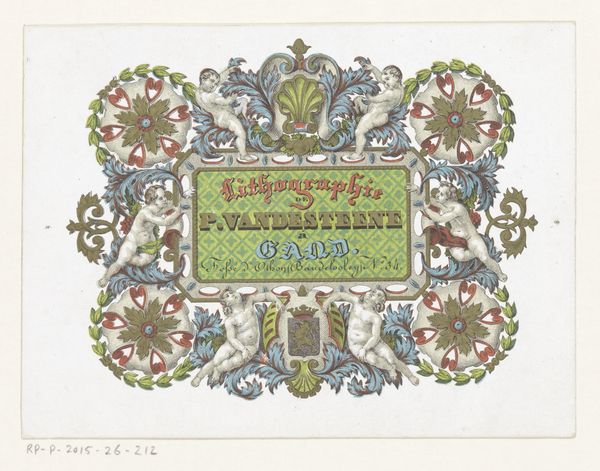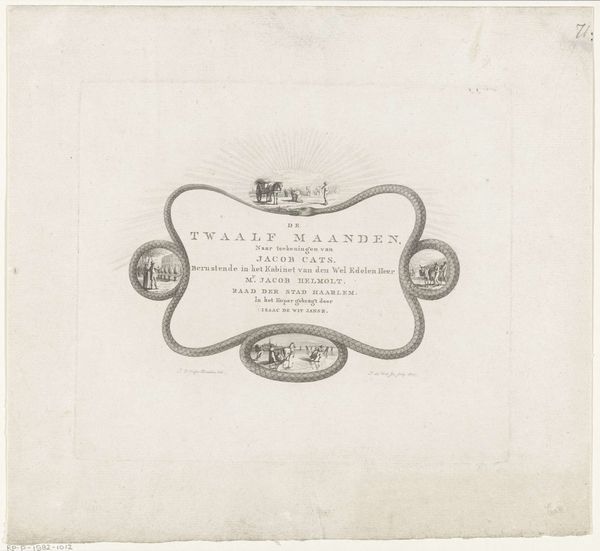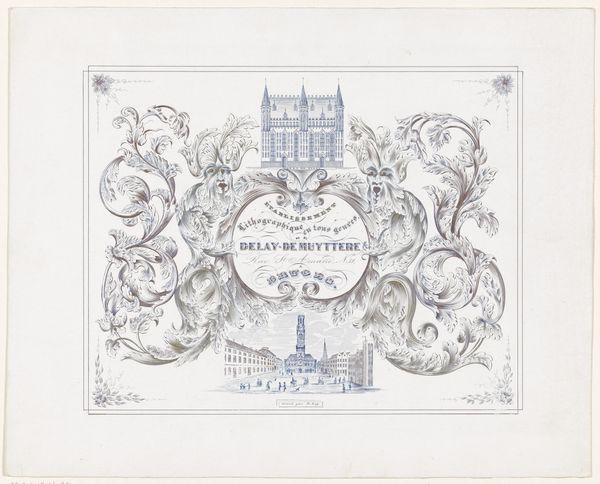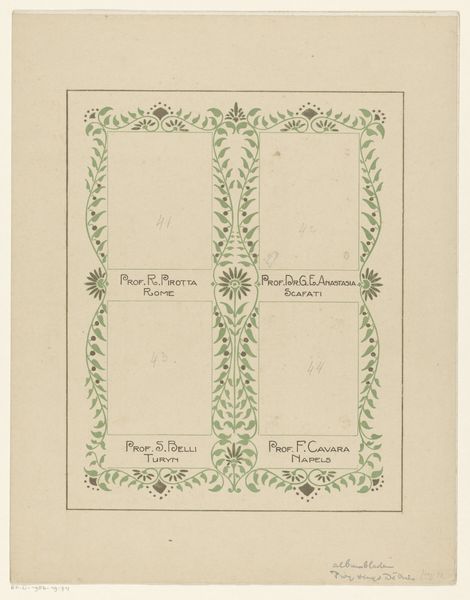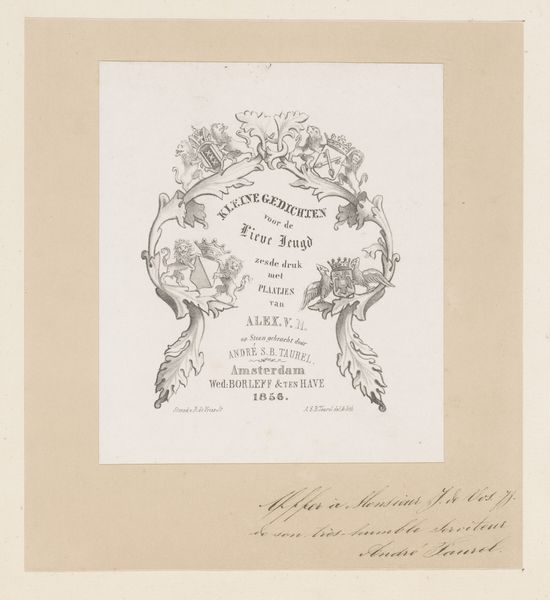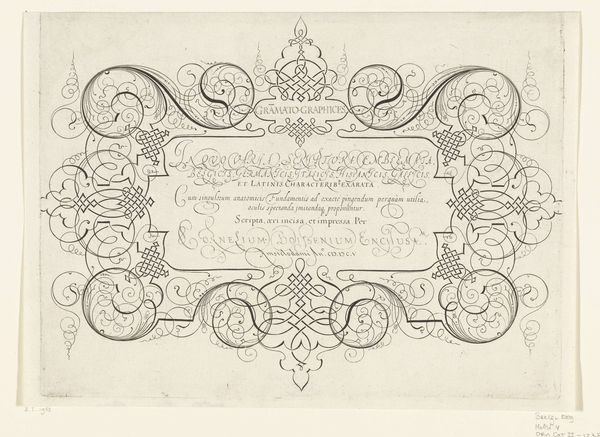
Dimensions: height 66 mm, width 90 mm
Copyright: Rijks Museum: Open Domain
Curator: Let’s turn our attention to this lovely piece of graphic art titled, "Visitekaartje van papierhandel Olin te Brussel" which translates to Visiting card of Olin paper trade in Brussels, created sometime between 1843 and 1872 by Ferdinand Théodore Hannotiau. It’s a lithograph, made with pen and ink on paper. Editor: It’s charming. Immediately I'm drawn to the delicacy of the floral border—roses, mostly. They give it a very romantic, almost sentimental feel, framing the more utilitarian purpose of the card. Curator: Precisely. And the combination of those romantic elements with the sharp, defined lines of the lettering speaks to the interesting dichotomy within the decorative arts of that period. It was a period grappling with industrialization and its impact on design. We see a revival of organic forms, idealized nature, to counterbalance the mechanization and mass production. Editor: Absolutely, that Art Nouveau influence, though nascent, is palpable in the swirling vines and asymmetrical arrangement. The pen itself, prominently displayed, isn’t just advertising, it’s a symbol of craftsmanship in a rapidly changing world. It’s a link to a past where things were made by hand, with skill and care. Do you think that it recalls the traditional guild system and quality of products being sold at that time? Curator: That’s a perceptive question. It serves as a visual promise of the quality of Olin's paper trade. Paper was fundamental, more than just material. As communication became increasingly important for civic engagement and commerce, paper symbolized education and even freedom of expression. Olin cleverly embedded himself in this cultural moment. Editor: So this isn't just a visiting card but rather a potent symbol, embedding the Olin brand in the burgeoning culture and identity of Brussels during this dynamic period of industrial and cultural transition. What's most striking to me is the tension created by such overt advertising employing what are undeniably very cultured artistic means. Curator: A tension that really defined an era, wasn't it? It makes me consider the very future of design during the advent of machine-made paper... Editor: Agreed. It really invites one to think about how deeply art can weave itself into commerce and the socio-cultural realities of its time.
Comments
No comments
Be the first to comment and join the conversation on the ultimate creative platform.
